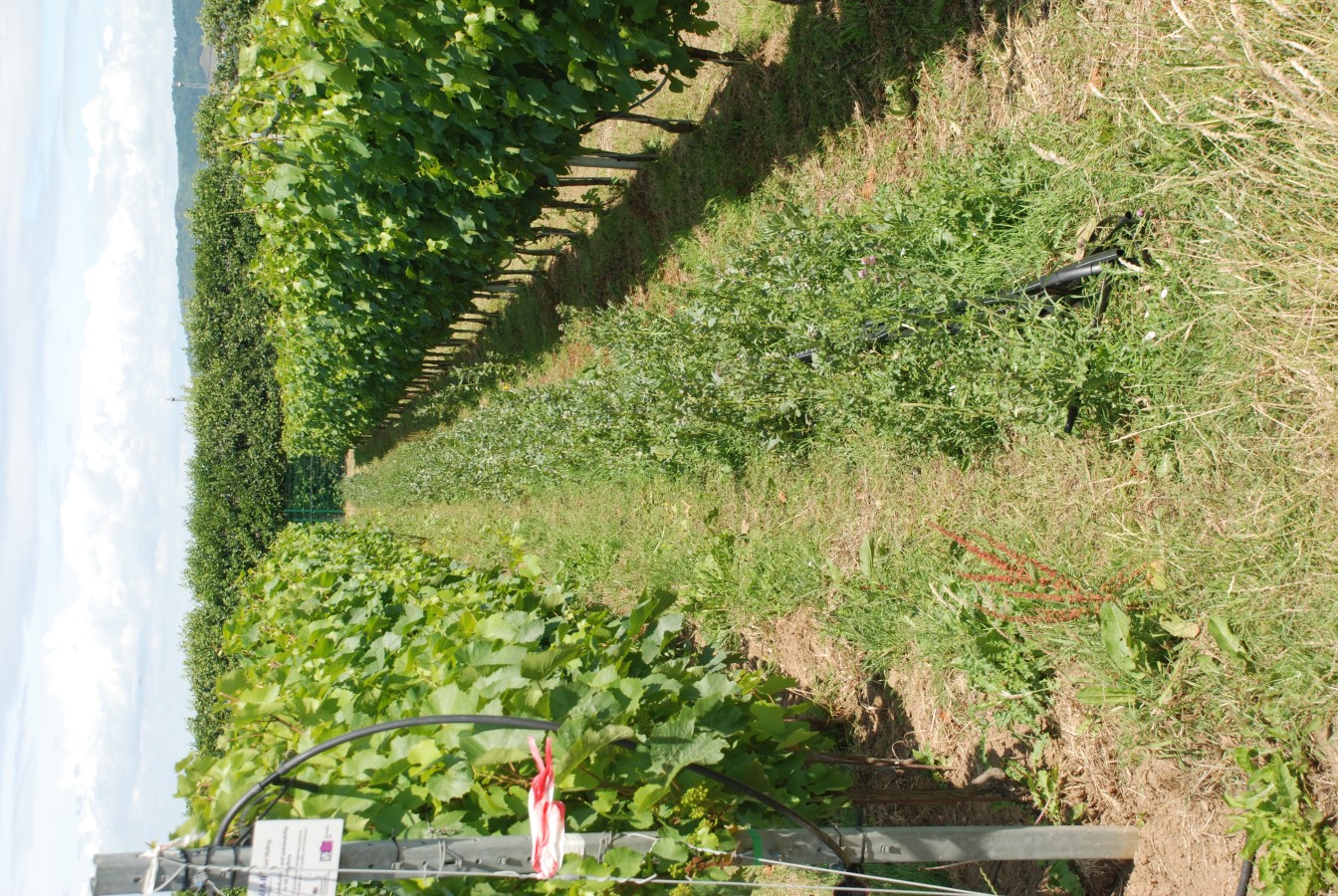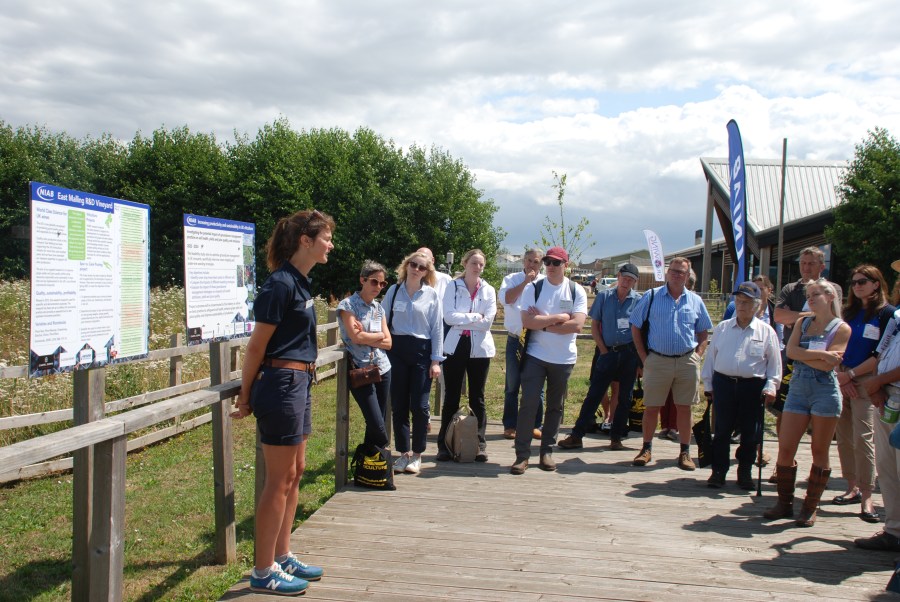Fruit Focus held at NIAB EMR, East Malling, Kent gave visitors to the event a chance to have a look at the unique research vineyards on the site.
The vineyard tour conducted by Dr Belinda Kemp gave valuable insight into the research work being undertaken. The new wine innovation centre was due to be stocked with state of the art equipment by the end of July.
This new facility will allow NIAB EMR to undertake wine trials and research separately from the vineyard research work. For example, using the variety Divico trials will be undertaken to examine the different ways wine can be made from the variety focussing on areas such as tannin and colour management.
Dr Belinda Kemp joined NIAB EMR in April 2023 as Group Leader for Viticulture and Oenology Research. She has many years experience within the wine industry including 10 years as the Principal Scientist at the Cool Climate Oenology and Viticulture Institute in Ontario, Canada.
Dr Kemp outlined some of the other unique aspects of this independent research site including the Rhizolab which allows observation of an apple orchard from below ground. This gives a unique perspective on the science of the soil microbiome and Dr Kemp expressed her belief in the importance of this research.
The stand alone research institute works with Post-Doctoral students and does not have the same access to government funds as a traditional college. Therefore NIAB EMR viticultural research works in conjunction with a funding consortium currently including Chapel Down, Gusbourne, Nyetimber, Netafim, Hutchinsons and Yara.
Control
In the vineyard Dr Kemp explained that there are two types of control: negative control, basically this involves leaving an area alone and monitoring the outcome and positive control, which involves the use of specific treatments and techniques.
Dr Kemp explained that in research work both these types of control are really useful. When highlighting the benefits of research it can be tempting to focus on the positive control.
Dr Kemp is currently working on a research project relating to Spur Pruning and Cane Pruning in Pinot Noir and Bacchus. The trial is being supported by Wine GB and the Worshipful Company of Vintners.
Cover management
Those on the tour were then introduced to the work of Dr Flora O’Brien who has been working on a project relating to ground cover management. The purpose is to closely monitor the impact on the vines and also measure the sustainability of ground cover management practices.
“Cover cropping has the ability to alleviate compaction, reduce run off and increase soil nitrogen,” explained Dr O’Brien. Fava beans are an example of vineyard cover crops that are being investigated at NIAB EMR.
The work undertaken at NIAB EMR has been done in three sowings to maximise the combination and the species diversity but the extremely dry weather in February followed by a wet March meant that the sowing dates had to be amended.
The project is designed to measure cover cropping and its subsequent effects on soil moisture and temperature, canopy density and foliar nutritional content. There are plans to make base wines from these rows and to investigate further if the resulting wine flavour profile is influenced by the choice of cover crops.
According to Dr O’Brien one of the biggest challenges for the project has been that of establishment but “the reasons why need investigating,” she cautioned. In an effort to aid establishment irrigation lines are being installed in the vineyards.
It was noted that there were a few unwanted plants species within the rows and Dr O’Brien explained that with cover cropping there is not really ever a clean crop.
The long term aim of the project will hopefully lead to insight regarding minimal intervention for the management of cover crops, will highlight which cover crops work best and the best methods of ground preparation for the establishment of a given cover crop.
There have now been two years of this project but Dr O’Brien explained that more funding was needed to extend the project further. “Soil Carbon Sequestration needs a decade of data,” she concluded.

Fava beans used as a cover crop



